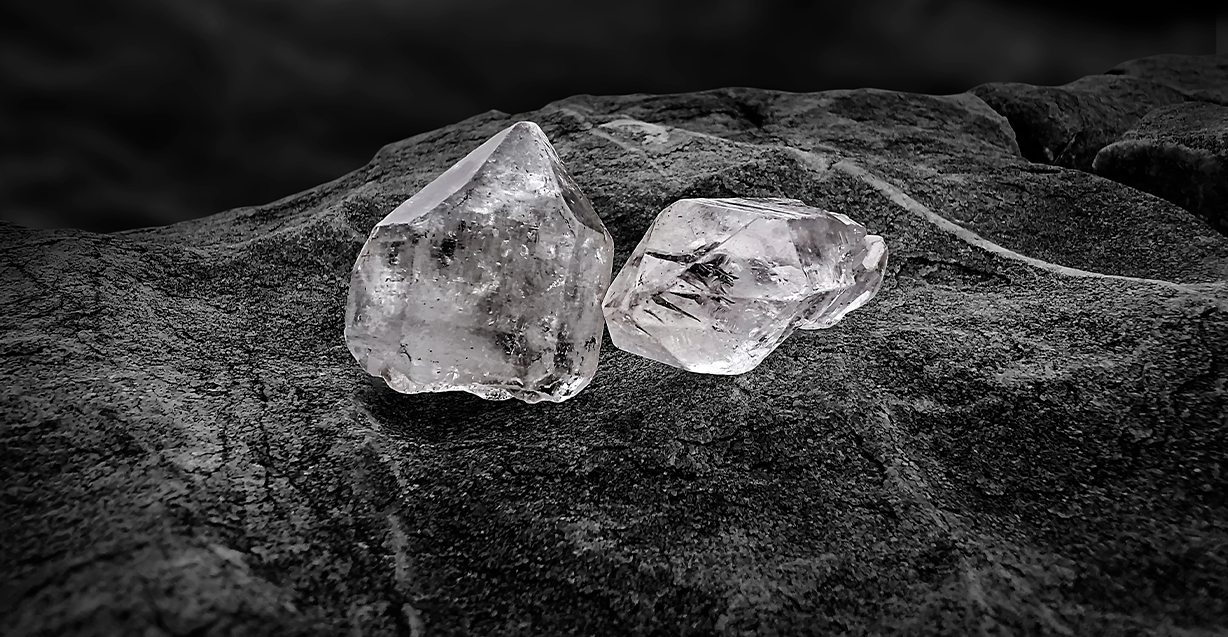

Raw diamonds, also known as rough diamonds, offer a mesmerizing glimpse into the early stages of a gem's journey. Unlike their polished counterparts, raw diamonds exhibit a distinctive and unrefined beauty that captivates with its natural allure. Let's embark on a journey to understand what these uncut gems look like and the fascinating features that set them apart.
Appearance:
Raw diamonds emerge from the earth in a crystalline form, showcasing the natural geometric structure of the mineral. These crystals can take various shapes, including octahedral, cubic, or dodecahedral formations. The inherent symmetry of raw diamonds adds to their charm, emphasizing the unique journey each gem undergoes beneath the Earth's surface.
Surface Texture:
One of the defining characteristics of raw diamonds is their textured surface. Unlike the smooth and polished finish of cut diamonds, raw diamonds may display irregularities, natural indentations, and even remnants of the host rock from which they were extracted. These surface features contribute to the raw, unaltered appearance that distinguishes these gems.
Transparency and Inclusions:
Raw diamonds vary in transparency, ranging from nearly transparent to opaque. What sets them apart are the inclusions—internal or external imperfections—that are an inherent part of their formation. These inclusions can take the form of minerals, gas bubbles, or other crystals trapped within the diamond, creating a distinctive visual landscape within the gem.
Color Variation:
Raw diamonds exhibit a diverse array of colors, including shades of white, yellow, brown, and even rare hues like blue or green. The presence of certain trace elements imparts color to the diamond. The raw state allows observers to witness the natural coloration before any enhancement or alteration, providing a unique and unfiltered glimpse into the gem's palette.
Formation and Extraction:
Raw diamonds are formed deep within the Earth's mantle, where intense heat and pressure act upon carbon atoms, causing them to crystallize into diamonds. Over millions of years, volcanic activity or geological processes bring these diamonds closer to the Earth's surface, where they can be discovered.
Extraction Process:
The extraction of raw diamonds involves mining operations that delve into the Earth to retrieve these precious gems. Depending on the deposit type—kimberlite pipes, alluvial deposits, or lamproite pipes—mining methods vary. Alluvial deposits, for example, may involve riverbed mining, while kimberlite pipes necessitate underground or open-pit mining.
Unearthing the Beauty:
Once extracted, raw diamonds are carefully examined by gemologists. The uncut gems undergo cleaning and sorting processes to remove debris and determine their quality. Gemologists assess factors such as size, color, clarity, and shape to understand the potential of each raw diamond.
Potential Transformations:
While raw diamonds possess a distinct allure in their uncut state, many undergo the transformative journey of cutting and polishing. This process, executed by skilled lapidaries, unveils the brilliance and sparkle inherent in diamonds. The cut not only enhances the gem's visual appeal but also brings out its internal fire and brilliance.
Design Possibilities:
Once cut and polished, raw diamonds can take myriad forms in jewelry design. From classic solitaires to intricate pave settings, the versatility of these gems allows for diverse expressions of creativity. Some jewelers even choose to retain elements of the raw diamond's original shape, celebrating its unaltered beauty in unique and unconventional designs.
Appreciating the Unique Appeal:
Raw diamonds serve as nature's canvas, capturing the geological history and forces that shaped them. The imperfections, inclusions, and textures become part of a narrative written in the Earth's embrace. Each raw diamond, with its distinctive features, tells a story of time, pressure, and the enduring beauty found in the heart of the Earth.
Personal Connection:
For those drawn to the raw and unpolished, raw diamonds offer a personal and intimate connection with the Earth's geological processes. The untouched beauty of these gems appeals to individuals who appreciate the authenticity and uniqueness inherent in each uncut diamond.